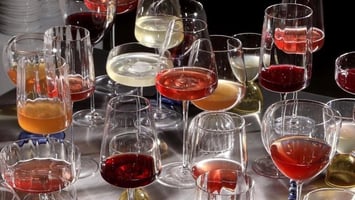In the bustling world of hospitality, restaurant owners and general managers are always on the...
Natural Wine Is On The Up While Wine Sales Decline

Wine is going natty–or at least the people drinking it are. Natural wine has been on the up for years now, growing from an indie counter-culture to a Gen Z preference. But why is it not feeling the same doom and gloom decline in sales as the rest of the wine industry? And what exactly makes it so appealing to young 20-somethings?What is Natural Wine?
Natural can mean a few different things in winemaking, but most often it implies organic viticulture, as all natural wines are guaranteed organic. Preferably, little is taken away during the wine-making process and usually there are minimal interventions for preservation, making it the purest, unadulterated grape juice.
For many natural wine producers, additions such as hand harvesting, wild yeast fermentation, and avoiding fining and filtrating are important to keeping the wine as natural as possible. With grapes that haven’t been sprayed down with pesticides or herbicides, intervention is kept at a minimum. Native yeast that lands on the grapes kicks-off fermentation and additives of oak flavor, sugar, or acid are avoided during the wine making process.
Some natural winemakers will add minimal sulfates before bottling to preserve and stabilize the wine, but this isn’t always the case. Allowing the grapes to simmer with minimal intervention results in less consistent tastes and aromas between vintages, and sometimes, they even wander into funky flavor territories.
Natural Wine Isn’t Feeling A Decline In Sales
According to a IWSR Drinks Market Analysis, natural and sustainable wines made up less than 1% of sales in 2021, but demand was growing faster than the wine category as a whole. The same survey reported that in 2022, 30% of US wine drinkers cited sustainability as a driving factor in their wine choices. This interest has led to a higher preference in natural wines, as they are generally perceived as healthier, less harmful to the environment, better tasting, and higher quality.
Those who were drinking natural wine before are likely to continue to drink natural wine. And, as a result of more health-conscious drinkers, the interest in natural wine is growing. With its rebellious, counter-culture energy, natural wine is often described as the “wild-child” of wine. It’s playful, experimental, and crafty–leading to an intrigue in its unique tastes, small producers, and non-invasive processing.
A More Approachable Wine
Compared to its more classical counterpart, the wine itself and the producers, bars, and stores that sell natural wine come across less stuffy and snobby. This isn’t to hate, as a lot goes into producing both, but for many, the biggest drawback of wine is the culture surrounding it. For those looking to casually drink a glass, they may not care too much about the extensive details of a producer. But for the semi-health-conscious, average drinker, natural wine feels like an easy, playful option to casually sip on.
Alongside natural wine itself, the community of wine bars serving these glasses makes it easier than ever to step into this non-traditional experience. Offering a relaxed, laid-back atmosphere, these bars welcome casual and younger-drinkers to sip, have fun, and taste delicious (sometimes even funky) flavors they may not usually go for. Plus, as The New York Times reported, many wine bars are leaning into the shift towards healthier, anti-alcohol living by serving nonalcoholic options or wines with low alcohol percentage, covering all the bases to make them an ideal spot for a night-out.

.jpg?height=200&name=image_fx_%20(1).jpg)


